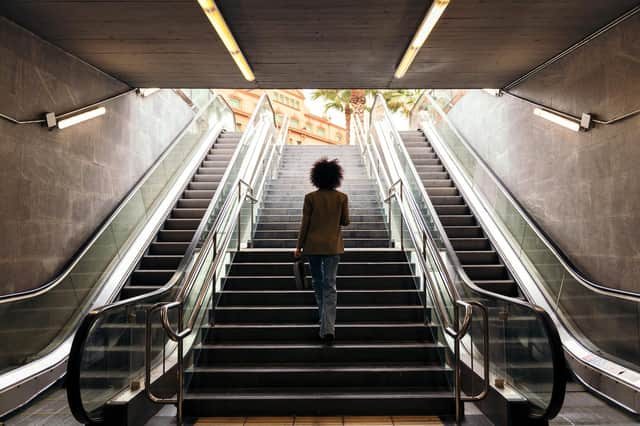Dr's Casebook: Use stairs when you can to counter bungalow legs


Dr Keith Souter writes: I know that it is not an easy matter if your circumstances are such that because of health or age you don’t feel you can manage that much, yet there is always something you can try.
Research from a university in the USA suggests that taking at least 50 steps climbing stairs each day can significantly reduce your risk of heart disease.
Advertisement
Hide AdAdvertisement
Hide AdThis study was just published in the journal Atherosclerosis. Using data collected from 450,000 adults, the study calculated people’s susceptibility to cardiovascular disease based on family history, risk factors and genetic risk.
They were specifically asked about their lifestyle habits and their frequency of stair climbing. They found that climbing more than five flights of stairs daily could reduce risk of cardiovascular disease by 20 per cent.
Of course, if you live in a bungalow or a flat you may not have access to stairs. You may have heard of bungalow legs, which is a real thing.
Effectively, because you are not regularly climbing or descending stairs the legs do become weaker.
Advertisement
Hide AdAdvertisement
Hide AdStairs challenge your legs in different ways than normal walking.
When you go up and down stair the legs function differently. Going you use power from the gluteal or buttock muscles, the quadriceps at the front of the thighs and the calves in the lower legs to propel forwards and upwards.
Going downstairs, you use your muscles to absorb energy and control our descent, especially the quadriceps at the front. Using stairs uses more energy than walking on the flat.
You also use the soleus muscles to pump blood and interstitial fluid back to the heart. So, oedema or swollen feet and ankles are less likely.
Advertisement
Hide AdAdvertisement
Hide AdIf you do live in a bungalow or flat consider using stairs wherever you go out and have the opportunity. At the shopping centre, or hotel, think about taking stairs instead of the lift.
And at home, every now and then get a dining chair and use it as a support to do a few sitting-to-standing exercises.
And also with the chair do some heel raising by lifting onto the balls of your feet.